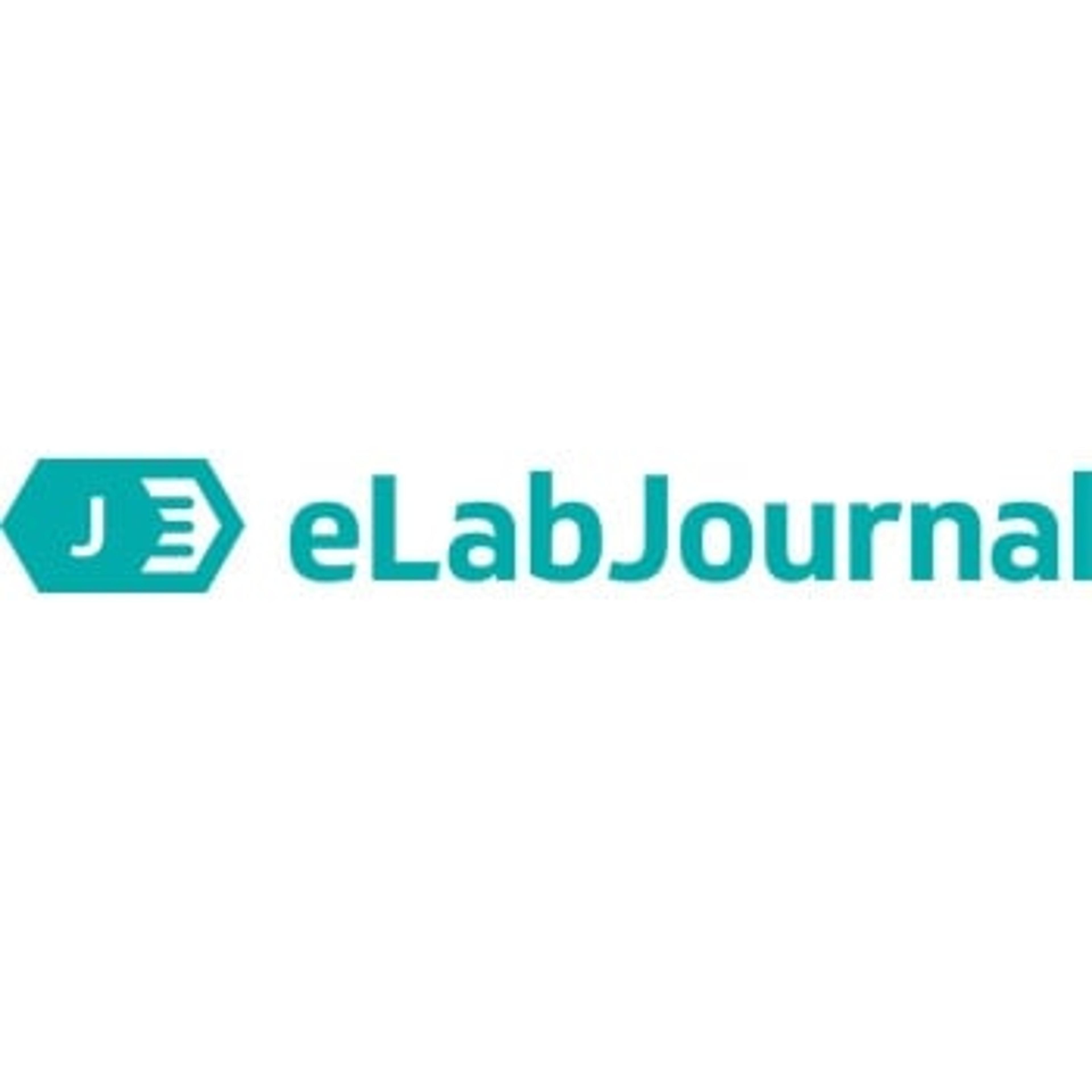The digital transformation: How can labs embrace digitalization?
Panel of data science experts share their insights into how labs can ‘go digital’, and reveals a solution designed to help labs embrace digital advancements and go paperless
12 Jun 2022
We are entering a digital transformation, where paperless processes are now becoming the norm. The digital era that we now live in is rapidly changing the way we operate in laboratory settings, by improving workflows, reducing waste, and delivering cost savings and faster turnaround times. Digitalization has continued to transform businesses sector by sector and is designed to make our lives easier. Nevertheless, despite such technological advances, many labs have not adapted to our fast-changing world and remain unaware of the tools needed to progress into the digital realm.
In this exclusive SelectScience interview, we speak with a team of data science experts, Aneesh Karve, chief technology officer and co-founder of Quilt Data, Mike Tarselli, chief scientific officer at TetraScience, and Tobias Wingbermühle, co-founder and chief commercial officer at Clustermarket, to find out how lab users and start-up companies can effectively transition from paper to paperless, and how a dedicated electronic lab notebook has been designed to bring together all your lab needs into one simple solution. Our panel also outlines how this platform uses artificial intelligence, automated workflows, and robotics to effectively aggregate data for analysis, and shares their thoughts on how going through a digital transformation will allow you to save time on what really matters most in the lab.
Moving from paper to digital

More labs are making the transition from paper-based processes to advanced digital solutions, which has led to more scientists embracing the digital era. Digital tools help streamline documentation, provide traceable and secure back-ups that researchers can access from any location, and also help scientists manage large quantities of data, a key cornerstone to effective and reliable research. The benefits of ‘going digital’ provides scientists with more freedom by ensuring they can focus their time on valuable experiments, rather than documentation.
To help advise scientists who are preparing to go digital, we spoke with chief scientific officer, Mike Tarselli at TetraScience, a scientific data cloud company, “we help biopharma companies migrate their data to the cloud, we render it searchable, liquid, and fair (findable, accessible, interoperable, and reusable), and then harmonize it and prepare it for downstream actions, such as publication, storage, artificial intelligence (AI), machine learning (ML), and visualization,” explains Tarselli. “To me, it’s less about ‘going digital’ - though paper-based workflows bear risks around data loss, facile collaboration, and long-term storage, rather than about using data holistically. Think about downstream usage, if scientists needed to find all the data about a given project, could they? If a data scientist wants to compare multiple runs, batches, or cultures against one another, does this become an Excel or PowerPoint nightmare?”, asks Tarselli.

Aneesh Karve, chief technology officer and cofounder at Quilt Data, also shares his thoughts on digital transformation. “At Quilt we’ve become obsessed with how data can be used by humans for trusted decisions. I met my co-founder, Kevin Moore, in grad school at UW-Madison. We were simultaneously tantalized by the power of databases and frustrated by how hard they were to use—especially for scientists. Quilt makes high-performance data systems accessible to the greatest number of people by connecting siloed pieces of knowledge into a single fabric. That's how our company, Quilt, got its name. Every person, instrument, and pipeline has a patch of the truth, and Quilt brings those patches together,” Karve continues, “our mission now is to help enterprises integrate all of their data into understandable, actionable, trusted units that we call data packages.”
Karve further explained that the single most important thing to remember is that transformation, digital or otherwise, is more of a human problem, rather than a technological problem, and changing human behavior can be problematic. “It can only work if there's a real incentive and reason for the change. I recommend that labs study the ‘Switch’ formula. The basic idea is to calm the elephant, (soothe people's emotions), address the rider (speak to their intellectual reason), and illuminate the path (show them a better future). Companies that begin digital transformation with technology miss the point and end up with expensive, cloud-based systems that no one uses. Instead, it's much more effective by illuminating a path with simple, and compelling user stories that you wish to deliver, and work from there on digital transformation,” advises Karve.

Tobias Wingbermühle, cofounder and chief commercial officer at Clustermarket, has been working hard to build world-leading schedule and management systems, to help laboratories optimize operations, assist researchers to make more out of existing resources, and accelerate results. “We equip research teams with an easy-to-use software solution enabling them to coordinate equipment usage, plan maintenance activities, and generate reports on utilization and forecasts for resource planning,” says Wingbermühle. Improving the sustainability of laboratory operations is also important to Clustermarket, “well organized sharing of equipment and consumables between colleagues and teams helps them become more sustainable by increasing utilization, identifying unused instruments and being able to address breakdowns and incidents quickly. Much like sharing consumables to avoid them going to waste, sharing less frequently used lab instruments is a great way to ensure your equipment is not sitting idle and you are not wasting money.”
When Wingbermühle was asked how he thinks labs can best prepare to ‘go digital’, he recommends “labs should set up a small project team including different stakeholders, such as someone from IT, the lab manager, and a scientist who will be mostly the end user. Then, the scope, budget and timeline of the project should be defined, starting with collecting information about the status quo, what processes and tools exist, what works, what doesn’t, and what is missing. Based on the status quo analysis, the project team can now research available tools that can be added to the daily processes.” Wingbermühle highlights the following aspects should be included in these evaluations:
- Usability – The digital tool must be easy-to-use, which is key for the internal adoption of the system.
- Complexity - Could the system cope with the complexity of the business, and will it grow with the business?
- Compliance – Check that the system meets the regulatory compliance standards – for the R&D sector and the regions the business operates within.
- Integrations – Check that application programming interfaces (APIs) are available – to fully integrate with all laboratory equipment.
- Growth – Is the system feasible for a growing company? Requirements can change if it is a team of ten people or a team of five hundred. The digital tools should be scalable.
- Price – How high are the costs, is it a one-time payment or are there recurring costs?
- Test the system – Ensure all stakeholders test the usability of the system and are brought into the decision.
Helping start-up companies thrive
For those beginning their entrepreneurial journey, many may be wondering how and why they should move into the digital realm. Wingbermühle states, “digital tools drive efficiencies in all industries by automating tasks, reducing manual errors, and generating huge savings in time and money, as well as increasing accuracy. In the research and development space, where scientists are creatively exploring new frontiers in techniques, treatments, and understandings, digital tools offer a unique ability to transform operations, and provide the relevant standardization and compliance. The earlier a company implements the right digital tools, the fewer headaches they will face driving adoption at a later stage.”
Running a start-up company is widely acknowledged as a significant challenge, associated with fierce competition, scaling-up, lack of demand, and financial setbacks. Nevertheless, these small companies do still come with their own unique benefits, since they have the opportunity to experiment with new ideas, solutions, and see things from a fresh perspective. According to Tarselli, “Biopharma start-ups get an amazing choice, they can implement slow and singleton experiments, or they can go cloud-native from day one. Getting a cohesive digital ‘foundation’ sets your company up for rapid scaling and faster technology adoption.” Cloud technology helps companies scale up and adapt at speed, while also streamlining operations and increasing innovation, Karve shares, “Quilt was born in the cloud. We literally do not have a single line of code that wasn't written first and foremost for the cloud. Digital transformation is important because it's our opportunity to provide leverage to our customers. Instead of re-inventing the same enterprise infrastructure over and over again, we offer the Quilt platform as a starting point for humane data management.”
Big pharma vs small pharma
When comparing the issues that a large pharma company would face compared to an innovative start-up company, Karve states, “people are set in their non-digital ways of doing things because the right incentives to change haven't been thought out. Pharma leaders need to realize that the pressure and incentives on scientists are to ‘run experiments’. Organizing and retaining knowledge gain is very low on their list of things to do,” Karve continues, “so digital transformation should focus on putting the incentives, not procedures, in place so that in the process of organizing themselves, scientists also organize their data for reuse over time, across colleagues, and through compliance.”
With pharma challenges in mind, Wingbermühle has been working with more than ten thousand labs worldwide, including large pharma companies. These companies have provided him with many interesting insights into their bottlenecks, which have become invaluable in helping Clustermarket implement software tools. Wingbermühle states there are two main challenges large companies face when implementing new digital solutions:
- Changing the status quo will cause resistance from current employees and achieve a satisfactory adoption of the system throughout the company.
- Larger teams have people with different interests who may resist change and prevent satisfactory adoption of digital tools.
“If these challenges are not solved, data silos are created in different teams, buildings, or sites.” Wingbermühle highlights that one key solution to helping overcome these challenges is to identify people that are willing to implement the digital tools, and to use them to drive adoption from the bottom-up.
To expand on this point further, Tarselli remarks, “large pharma companies simply have more of everything: more compounds, historic data, physical space, infrastructure, and more employees. While this usually proves an advantage, this surplus can lead to data silos, legacy technology accumulation, and endless system refactoring. After some false starts through the early years of 2010, pharma companies appear ready to fully re-platform to the Cloud to gain the benefits outlined above for smaller start-ups.”
Switch to digital: Meet the technology
Once a lab has made the decision to ‘go digital’, it is time to select the right automation and AI tools to help meet their goals in a sustainable way. eLabNext have developed the eLabJournal, an all-in-one solution, designed using AI features, automated workflows, and robotics, to allow scientists to aggregate data effectively for further analysis. The eLabJournal is suitable for any lab, whether it is a start-up company, or a large established company, this solution can improve productivity and collaborative efforts by allowing users to trace, match and visualize their exact lab workflow.
Tarselli refers to the common Design-Make-Test-Analyze (DMTA) loop, which can be streamlined in Cloud systems, “we see very good concordance with how this workflow maps not just the biopharma therapeutic production line, but also how data flows back into our platform to inform the next step in decision-making,” explains Tarselli. Karve has also been applying this platform to his work, “armed with a standardized container for data, compliance becomes a breeze because every version of the dataset is tracked, versioned, and has a lineage – much like a modern code repository. With respect to security, the next generation of data management applications will run 100% in the customer's private clouds, so data platforms whose control plan and data plane run in the customer account offer the highest levels of cloud security, with no third-party risk. As for safety, the more correct and complete the team's knowledge, the smarter decisions they will make as they transition from discovery to clinical and beyond,” explains Karve.
Looking ahead
Our panel of experts share their aims for the future, “my hope is that cloud vendors will provide turnkey software that handles the problems of data integration, data stewardship, and findability – so our customers can focus on bringing drugs and therapies to market. The benefits are widespread, not the least of which is alleviating human suffering,” shares Karve. Wingbermühle also has great plans, “Clustermarket will be adding ‘Internet of Things’ capabilities so that customers are able to view real time parameters, and additional utilization insights in the software. This will allow researchers to check parameters, such as humidity and temperature directly on our platform. Clustermarket has also launched integrations to electronic lab notebooks (ELNs) and financial systems, giving researchers the possibility to move between their daily used digital tools seamlessly.”
In his closing statement and speaking directly about his aims and future plans, Tarselli explains, “As baseball great Yogi Berra quipped, ‘it’s tough to make predictions, especially about the future’. We hope to expand our offering to address end-to-end challenges across the biopharma landscape, including all data types, instruments, and results, discovery through manufacturing. We also intend to capture operational and scientific insights, through our productized scientific applications and reusable, searchable data formats, that will expedite pharmaceutical development and ensure lab data remain the central, core asset.”
Erwin Seinen, co-founder of eLabNext shares his thoughts, “science revolves around the core of consistent and reproducible results, which is an increasingly difficult feat with digital assisted big data generation that has become the norm in many fields. AI provides the tools necessary for an equally accelerated analysis and experiment design that upholds the standards that we have lived by to this date. AI applications will help us take the inevitable next step in science.” Zareh Zurabyan, Head of eLabNext, concludes by explaining more about the need to ‘go digital’ in the right way, “what we are seeing these days is labs not hesitating to go digital, but rather going digital in the wrong way. Labs end up purchasing five or six different pieces of software, neither of which communicate with each other, causing decentralized data, loss of data, and loss of money. This is something that we call in the industry ‘Digital Health’. At eLabNext, besides providing this holistic and comprehensive electronic lab notebook and sample management (LIMS) software, we consult labs to start on a healthy digital foundation from the beginning. With our marketplace, we have allowed labs to use an array of 3rd party software integrated into the mix, allowing labs to grow within the system, and not outgrow it. It is precisely this model that allows us to work with Tetrascience, Quilt, and Clustermarket, because sharing data between systems is absolutely crucial these days, when you are automating your lab, and trying to be digitally healthy and sustainable.”
Learn more about eLabNext and how the eLabJournal could help you.
Visit our new special feature to find out more about the latest advancements in digital transformation.

